5 Types of Ticks in Florida (With Pictures)
-

- Last updated:
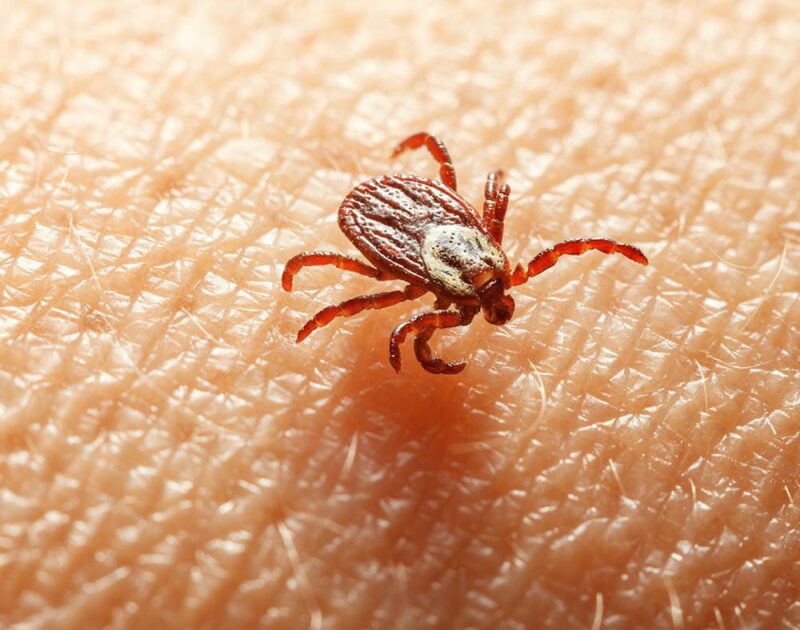
Florida is known as the Sunshine State. It boasts warm sunny weather year-round. It is a favorite spot for tourists, snowbirds, and locals alike. Every year, millions of people flock to Florida’s beaches, shady trails, clear rivers, and state parks to enjoy some much needed outside time. That puts people at risk of running into Florida’s native tick population. Florida’s warm sunny weather is also favored by the tiny arachnids.
In order to best protect yourself from ticks, you need to know what to look out for, when the ticks are active and what kind of risks they pose. Here are five of the most common tick species to be aware of in Florida.
The 5 Types of Ticks in Florida
1. American Dog Tick

| Scientific Name: | Dermacentor variabilis |
| Size: | 5 mm |
| Associate Diseases: | Rocky Mountain Spotted Fever, Tularemia |
The American dog tick is one of the most common ticks in Florida. The tick gets its name from the fact that it primarily likes to feed on dogs. The adult American dog ticks are fairly large and feature distinctive white markings on the backs of the males and females. The rest of the ticks are brown in color. Adolescent American dog ticks tend to feed on small rodents.
While these ticks don’t generally prefer humans, they can still attach themselves in the right situations. American dog ticks can cause temporary paralysis in rare cases. When the tick is attached, it can let off a toxin into the spinal column or brain that causes paralysis until the tick is removed. This has been documented in both dogs and small children. The American dog tick is also a vector for Rocky Mountain spotted fever.
If you have a dog, it is suggested that you keep their flea and tick medication up to date. Be sure to check yourself for ticks regularly if you spend time outside, especially in woody or brushy areas.
2. Black-Legged Tick
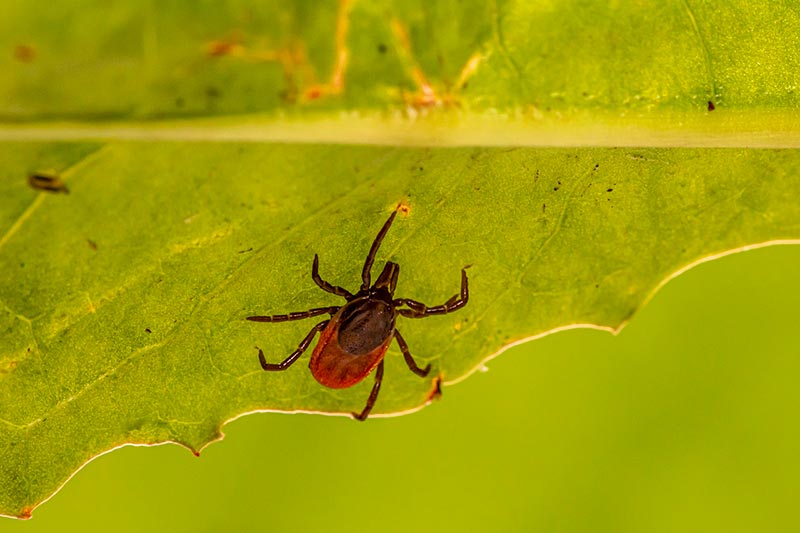
| Scientific Name: | Ixodes scapularis |
| Size: | 2-3 mm |
| Associate Diseases: | Lyme disease, Anaplasmosis, Babesiosis |
The black-legged tick used to be referred to as the deer tick. The name has been shifted to reflect the neutral nature of the tick. The name deer tick made people think that the ticks only liked to hitch a ride on deer. That is not the case. Black-legged ticks are one of the most prolific spreaders of Lyme disease in the United States. Lyme disease is a serious ailment that occurs when a tick remains attached for at least 24 hours and transfers bad bacteria into your bloodstream.
Black-legged ticks often escape notice because they are so small, just 2 to 3mm in size. That makes them hard to find and remove, which makes them dangerous. Since these ticks are the primary Lyme disease vector, it is important to try and spot them as quickly as possible. In Florida, black-legged ticks are active in the winter, with activity levels highest from September through May. Black-legged ticks are found throughout Florida and throughout the entire Eastern United States.
3. Brown Dog Tick

| Scientific Name: | Rhipicephalus sanguineus |
| Size: | 5 mm |
| Associate Diseases: | Rocky Mountain Spotted Fever |
Brown dog ticks primarily feed on dogs, hence the name. Brown dog ticks are most commonly found in areas where dogs frequent or in areas with large populations of domesticated or wild dogs. Brown dog ticks are much more likely to affect your canine friends than they are to impact you, but they do still occasionally bite people. You can pick up ticks that are sitting on your dog. That means if you pet your dog after they went to a dog park infested with brown dog ticks, you could get a brown dog tick on your skin.
Brown dog ticks have been identified as a vector species for Rocky Mountain Spotted Fever, a severe illness. However, as of right now, the CDC has only found Rocky Mountain Spotted Fever in dog ticks in the southwestern United States and in Mexico, meaning the risk in Florida is fairly low. It is still recommended that you remove ticks right away if you find them.
If you have a dog, it is recommended to keep them up to date on their flea and tick medications so that ticks will die if they attempt to bite your pets. That will help keep you and your dogs safe from tick bites.
4. Gulf Coast Tick
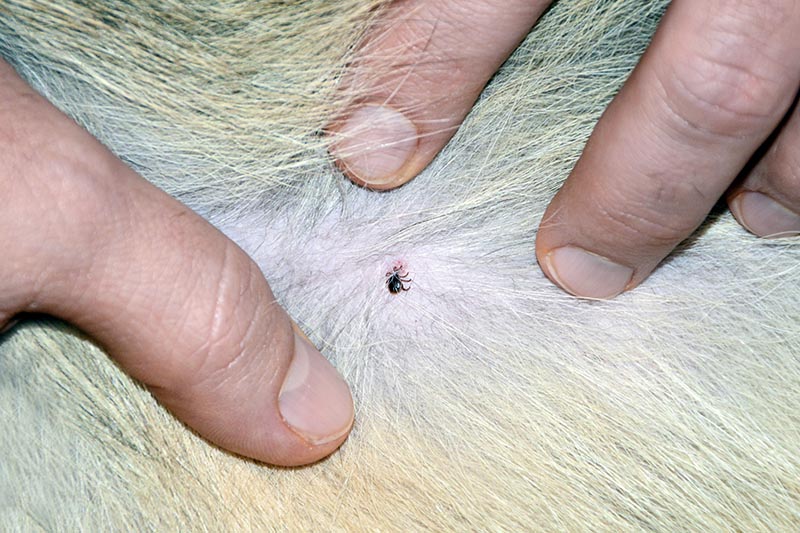
| Scientific Name: | Amblyomma maculatum |
| Size: | 4-6 mm |
| Associate Diseases: | Rickettsia parkeri |
The Gulf coast tick is a large tick that is similar to the American dog tick in shape and appearance. This tick is prevalent in large numbers throughout the southeastern United States and gets its name from the nearby Gulf of Mexico. The Gulf coast tick has larger mouth parts than the similar looking American dog tick, and it is also predisposed to latch onto animals instead of people. These ticks are often found in and on the ears of large mammals such as cattle, dogs, horses, and other outdoor animals.
Despite the prevalence of other mammals, these ticks can still bite people. They do not transmit large numbers of diseases like other ticks, but they are a vector for Rickettsia parkeri. Rickettsia parkeri is a disease that is similar to Rocky Mountain Spotted Fever, but scientists say that Rickettsia parkeri is milder than its dangerous cousin. If you get bitten by a Gulf coast tick, you need to be aware of the signs and symptoms of Rickettsia parkeri.
Adolescent ticks and nymphs start appearing in the winter (January – March), with the adults becoming active during the traditional tick season stretching from March through September.
5. Lone Star Tick
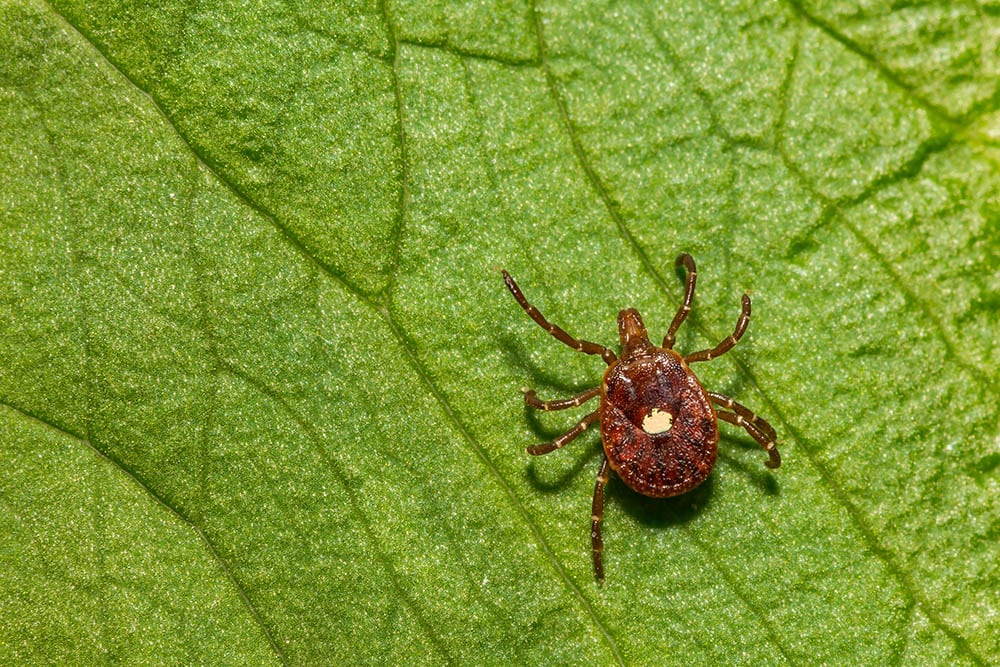
| Scientific Name: | Amblyomma americanum |
| Size: | 5 mm |
| Associate Diseases: | Southern Tick-associated Rash Illness (STARI), Ehrlichiosis, Heartland Virus Disease, Bourbon Virus Disease, and Tularemia |
Don’t be fooled by the name. Lone star ticks are not only found in Texas. They can be found throughout Florida. The name lone star tick comes from a distinctive white spot that appears on the backs of the otherwise brown arachnid. Lone star ticks are fairly large and can be identified by the lone star on their back.
Lone star ticks do not carry Lyme disease, but they do carry a host of other nasty illnesses. Two of the worst diseases carried by the lone star tick include southern tick-associated rash illness (STARI) and ehrlichiosis. These ticks are most often active during the summer months, with their population peaks occurring in July. Lone star ticks are the most common human-biting tick in Florida, and they need to be carefully avoided. The only way to avoid getting the diseases carried by the lone star tick is to avoid being bitten by the tick in the first place.
 When Are Ticks Most Active?
When Are Ticks Most Active?
Ticks are generally most active in summer, with a season that stretches from March through September. Florida’s season is a little different. Since Florida has warmer and more consistent weather than other places in the United States, the tick season stretches for a longer period of time.
Many ticks can be active in Florida from February through November. That means that ticks are active nearly year-round. The black-legged tick is primarily active in the winter in Florida and operates on an opposite schedule of most species of ticks. The result is that you have to be vigilant throughout the entire year against tick bites and tick activity.
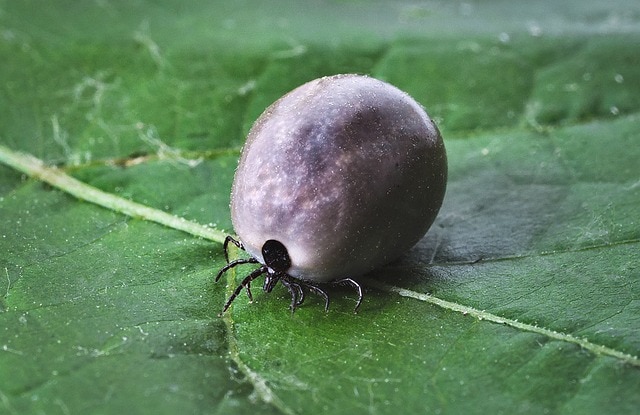
Best Ways to Avoid Ticks
The best way to avoid ticks is to avoid where they live. You are much more likely to pick up ticks in areas with large numbers of ticks. Ticks like to live in heavily wooded areas and in tall brush. If you spend time in the woods, make sure to stick to the paths and trails that are maintained. If you wander into an unmaintained brush, you have a good chance of bumping into a tick. It only takes a slight brushing motion to pick up a wayward tick.
Another way to avoid ticks is to wear long-sleeved shirts and pants. If you can, tuck your pants into a pair of boots. The more skin you have covered, the less likely you are to receive a tick bite. Wearing light colored clothing is helpful as well. Since ticks are largely brown and black, they show up well on light fabric. If you can, wear light-colored shirts and pants. That way, if you pick up a tick, you will be able to spot it faster. Once you spot a tick on your clothes, you will be tipped off to the fact that you are in a tick-infested area which can help you be more vigilant.
Remove Ticks Immediately
You must remove ticks immediately when you find them. If you see them on your clothes, brush them off right away. If you spend any time in outdoor areas where ticks could be present, you should look yourself over carefully for signs of embedded ticks. Tick-borne illnesses often take at least 24 hours to set in, which means the faster you remove them, the less likely you are to get sick.
The best bet is to look yourself over in the shower. Pay close attention to dark and warm areas of the body such as armpits, groin, elbows, and behind your knees. Ticks can also hide in hair, including the hair on your head. If you find a tick on you, remove it immediately.
 Conclusion
Conclusion
There are five common species of tick in the state of Florida. The ticks are most active between March and November. Ticks can carry a host of diseases in Florida, including the dreaded Lyme disease. The best thing to do is to try and avoid ticks altogether, and if you can’t, make sure you protect yourself and remove them right away if you find them on you. Florida has some beautiful outdoor spaces. Just be mindful of the ticks.
Featured Image Credit: Anest, Shutterstock
Contents

 When Are Ticks Most Active?
When Are Ticks Most Active?